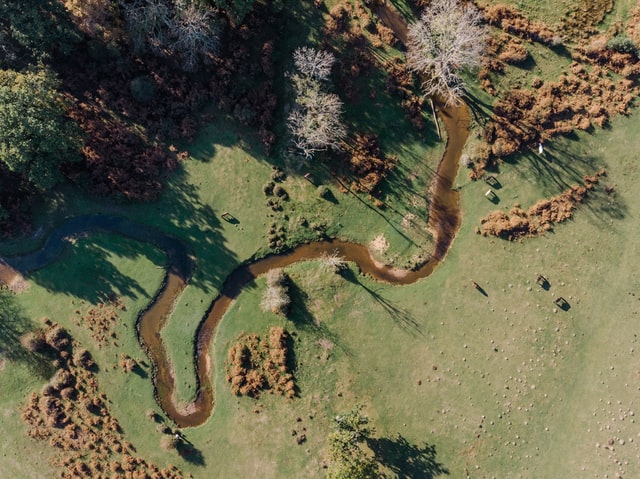The word meander is derived from the Greek word “meandros”, which means “winding”.
The term comes from the way a river wanders across the landscape, never following a straight path.
The word meander has come to be used synonymously with wandering or aimless behavior.
Indeed, rivers are born out of rain that falls on mountains and runs downhill over time instead of following a direct path down the slope.
The result is that over time the water may flow into a different direction or form a loop.
This can be explained by considering that stream formation is not just due to gravity but also to transport or turbulence.
For this reason, streams do not always follow the shortest path downslope.
This means that when a river flows downhill, it tends to wander from its direct path instead of following the quickest route downslope.
The presence of obstacles in the terrain may cause this behavior as well as friction along the way,
which tends to slow down water and causes it to change direction.
This makes sense if we consider that rocks rolling alongside and obstructions on a riverbed tend to bend water in different directions.
This effect happens particularly if a watercourse is long and narrow, as opposed to wide and curvy.
In addition, in humid areas a stream has more speed when it flows downhill because the density of the liquid is higher.
All this allows water to curve around obstacles and cut new paths even at great speeds.
The result is that new streams are born in the form of meanders or loops that follow various trajectories but always converge towards the center-line of the river valley.
Formation of wandering streams
Wandering streams, also known as meandering rivers or meandering streams, are very common in nature
can be observed in various terrestrial and aquatic environments.
Indeed, most stream valleys are sinuous and show evidence of having been carved by the river along its flow.
This is probably due to the fact that natural obstacles like rocks, clay banks and trees create a barrier for the flow of water along a streambed.
In addition, when water moves faster in a narrower valley it tends to curve around these obstacles and flow into more remote areas.
This phenomenon can be observed when a river flows through a channel that is very wide and shallow, as opposed to narrow and deep.
In this case, the water is able to move more quickly down the slope in a wider valley and tends to meander less.
For example, the Mississippi River in North America serves as an example of this situation
since its flow at first moves relatively straight but after it reaches the plains it begins to meander and form loops that follow no particular trend.
This causes rivers to bend over time as they carve their way through rocks and sediment along their path. what causes meandering streams to downcut and become incised meanders?
The morphology of rivers
depends on their origin and how old they are.
For example, there are several locations in the world where old branches of great rivers have dried out
because their flow was diverted by human intervention or natural events such as volcanic activity or intense earthquakes.
For example, the Mississippi river once had two large tributaries: the Arkansas River and the Missouri River.
At some point in history these two rivers have become disconnected from the main branch of the Mississippi
due to a change in course that occurred when lava flows buried old riverbeds.
Geomorphological features connected with streams
Meanders develop differently depending on their location, since each valley affected by water flow behaves differently.
For this reason different types of meanders can be distinguished depending on their morphology.
However, in certain situations when the valley is very wide and its slope is gentle,
a river may develop meanders or loops of various sizes that vary in shape over time as the watercourse changes direction.
This often happens because the terrain at the mouth of a river tends to be less smooth,
which hinders the formation of a direct flow.
The direction of flow in streams may change due to several factors.
Most often rivers converge or diverge from other watercourses or discharge into lakes or oceans.











